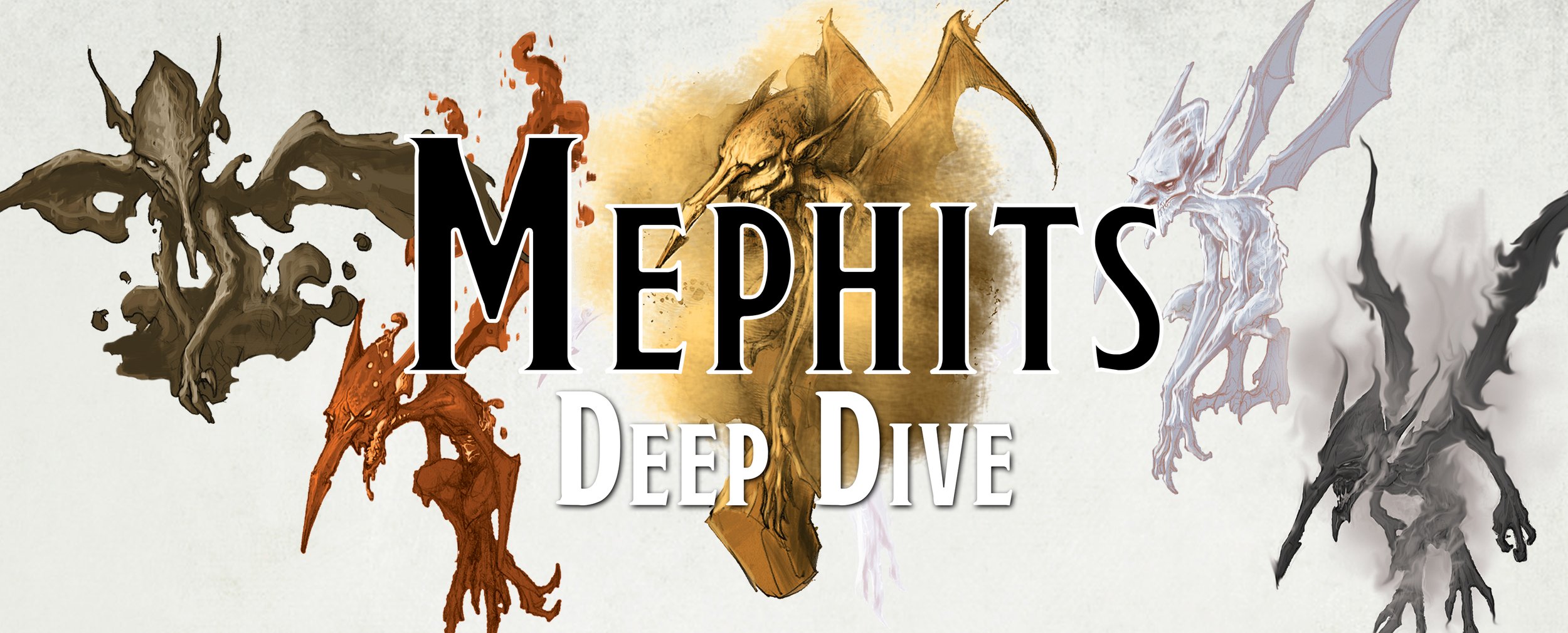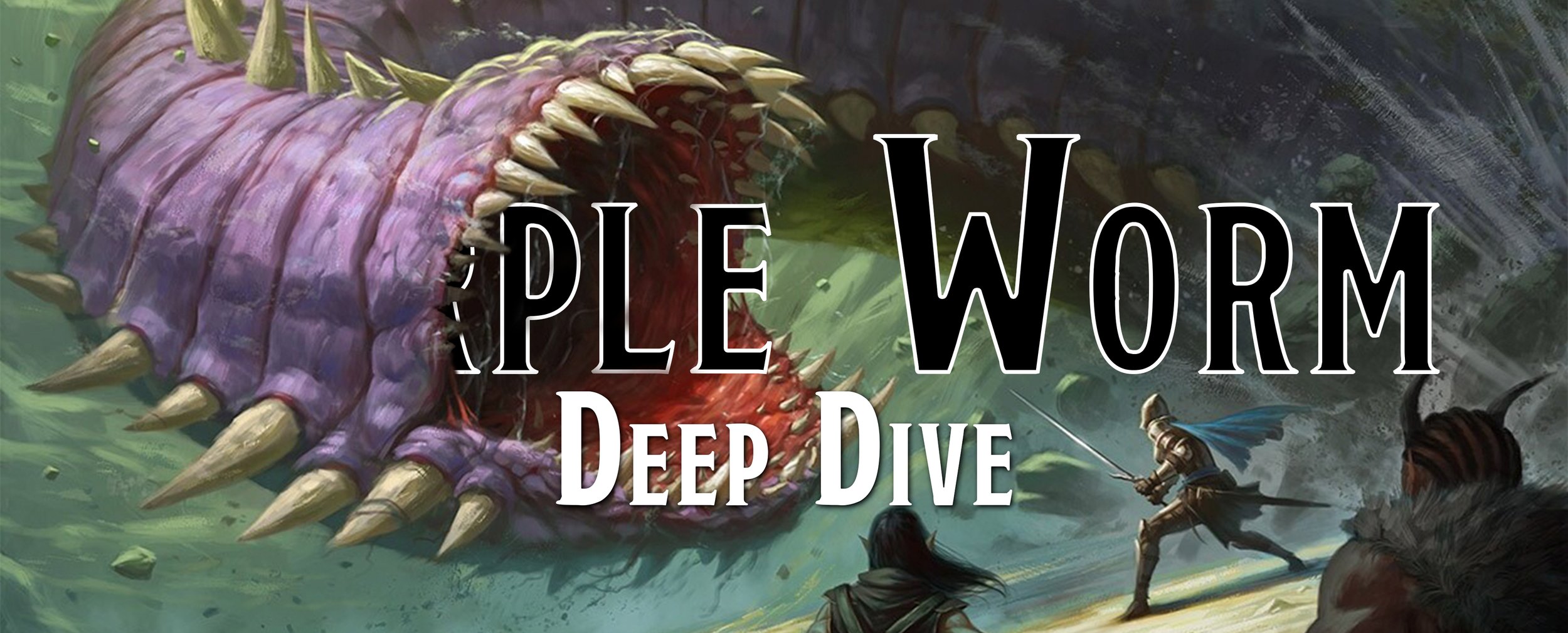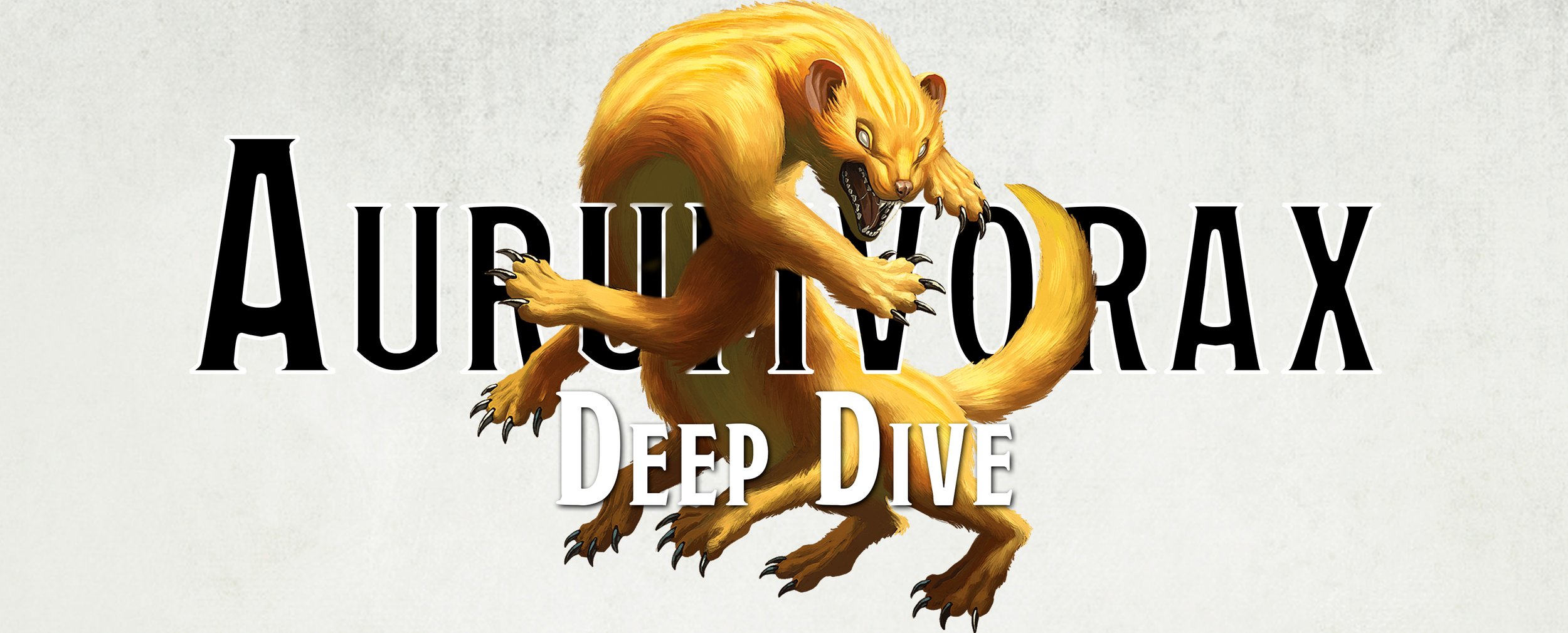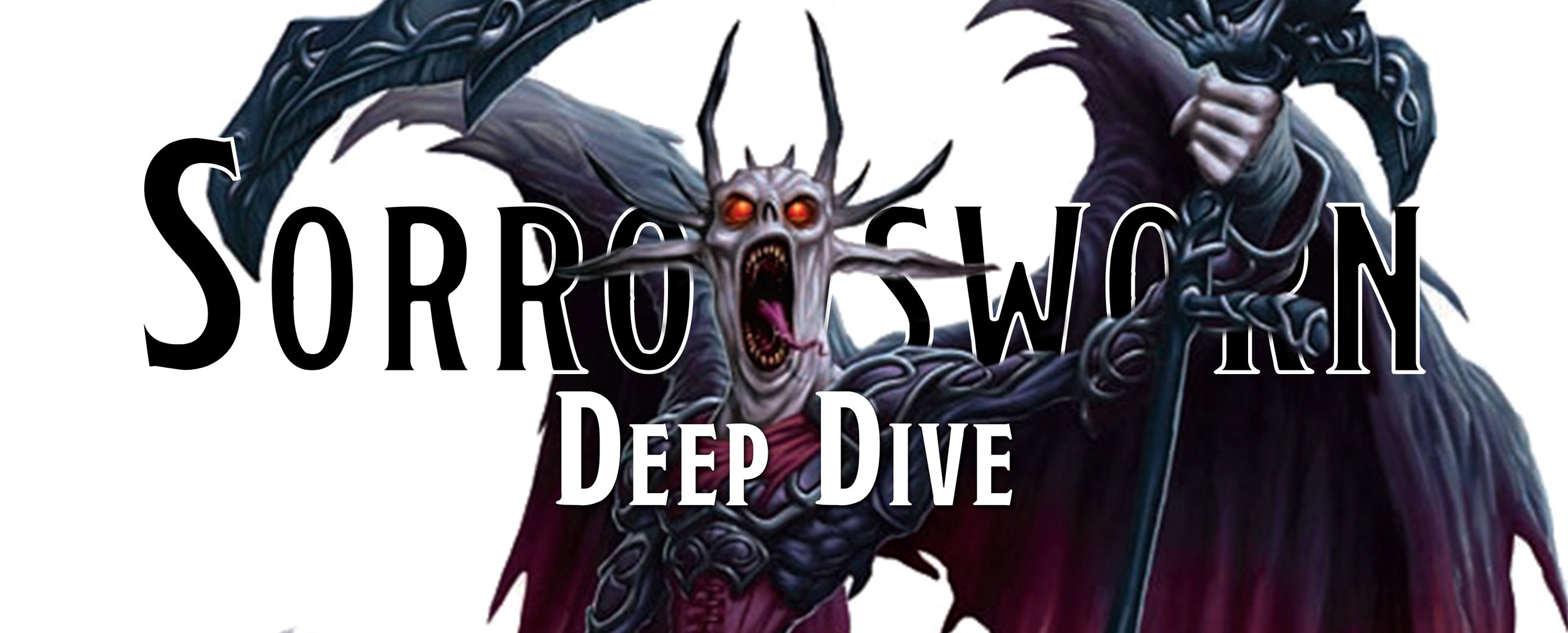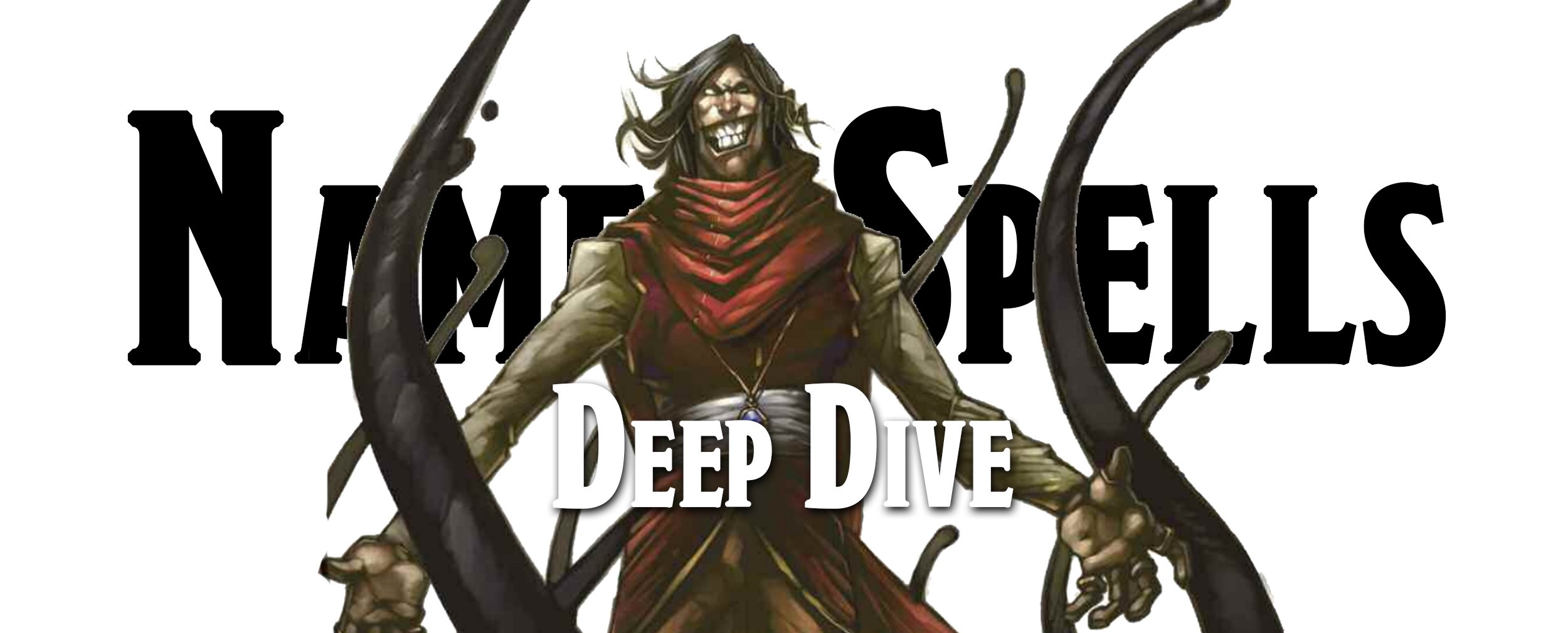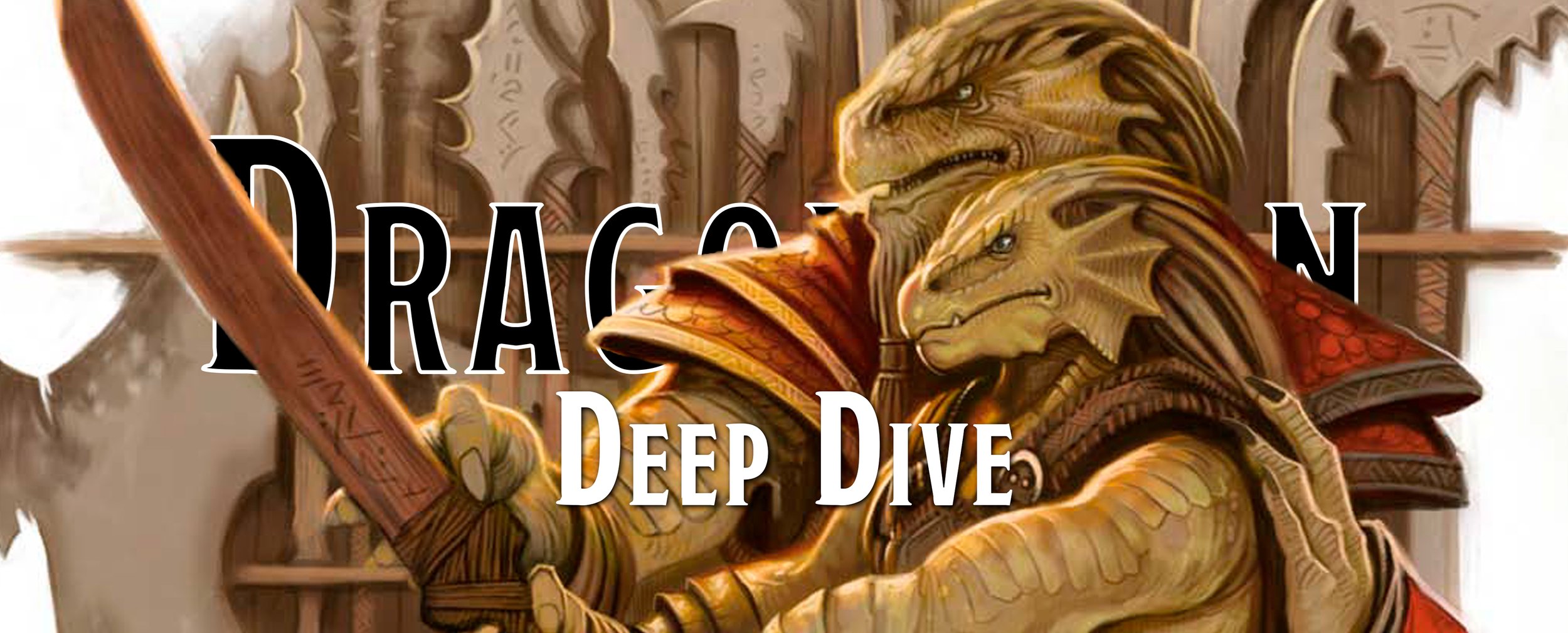Rewind - The Lost Spells
As with many things throughout the editions of D&D, certain spells have fallen off, never to be seen again. Some spells lasted just one edition, some made the cut for a couple editions then were booted from the game. We are going to look at some of those lost spells and get them all fixed up for 5e!
We decided to take a look at mostly Cleric and Wizard spells as they had the most to offer, not surprising as the original classes were Cleric, Fighting Man, Magic User and eventually Thief. Some of the spells on this list are pretty neat and we were sad to see them go. Others, well… we’re surprised they lasted as long as they did.
OD&D
The original D&D had very few spells, and many of them have been brought forth into 5e in one incarnation or another… though, one spell really stands out like a sore thumb on the Cleric spell list.
Turn Sticks to Snakes
Spell Level: 4th
Class: Cleric
Duration: 6 turns
Range 12”
Anytime there are sticks nearby a Cleric can turn them into snakes, with a 50% chance that they will be poisonous. From 2–16 snakes can be conjured (roll two eight-sided dice). He can command these conjured snakes to perform as he orders.
This spell lasted until AD&D where it stayed a level 4 cleric spell, but a level 5 druid spell. I’m not quite sure how powerful a bunch of snakes can really be, but it is definitely a fun spell to scare the barkeep into giving you and your friends free drinks… though wasting your 4th level spell slot on cheap drinks might not be the best use of resource allocation. There isn’t much to say about this spell beyond what is on the tin… though I will say if I spent my 4th level spell slot on some snakes, I sure hope they kill something.
AD&D
AD&D spells work differently than in 5th edition. Just like 5e, spells are either bestowed by the gods, as in the case for the Cleric, or are memorized over time for the Magic User and Illusionist (here’s a good article on the Illusionist). Cleric spells are granted through prayer by their god, and even then a Cleric can never be sure that their prayers will be fully answered. Magic users have to memorize their spells by reading their spell book and spells take at least fifteen minutes to memorize per spell level, which is a long time to be waiting for those high powered mages.
In AD&D, once a spell is cast it is totally forgotten; this does not preclude multiple use of a single spell that has been memorized more than once. That’s pretty brutal, especially for the magic user. These poor bastards are incredibly weak at lower levels… especially at first level where the magic user only has 1d4 Hit Points and a single 1st level spell. That means in combat they cast magic missile once and then cower in fear.
Rary’s Mnemonic Enhancer
Level: 4
Class: Magic User
Range: 0
Duration: 1 day
Area of Effect: The magic-user
Components: V, S, M
Casting Time: 1 turn
Saving Throw: None
Explanation/Description: By means of this spell the mogic-user is able to memorize, or retain the memory of, three additional spell levels, i.e. three spells of the first level, or one first and one second, or one third level spell. The magic user can elect to immediately memorize additional spells or he or she may opt to retain memory of a spell cast by means of the Enhancer. The material components of the spell are a piece of string, an ivory plaque of at least 100 g.p. value, and an ink composed of squid secretion and either black dragon's blood or giant slug digestive juice. All components disappear when the spell is cast.
Before we talk too much about the above spell, we discussed Rary and the Circle of Eight in our Deep Dive on Bigby. Let’s just say Rary was not a very good comrade as he betrayed the rest of the Circle and was responsible for the deaths of two of its members. The fact that he was a traitor has no baring on the fact that he was also an incredibly powerful magic user.
Magic Users, just like the wizard in 5e, get 4th level spells when they reach 7th level. At this point, the Magic User will have four 1st level spells, three 2nd level spells, two 3rd level spells and one 4th level spell. They’ve been having fun with the fireball for a couple levels now and want to try some different spells they haven’t used before. The rest of the party howls in despair every time the magic user says he’s not going to take the flaming ball of death and he succumbs to peer pressure.
Using the above spell allows the magic user to memorize the fireball spell twice (and the party rejoices) and then take the fly spell. Now the magic user can cruise around 30ft above the battle and rain down fiery death on his/her foes. This puts the total known spells at: four 1st level, three 2nd level, three 3rd level and one 4th level spell, though the 4th level spell is used up to give them an additional 3rd level spell… the things Magic Users do for their party.
Glassteel
Level: 8
Class: Magic User
Range: Touch
Duration: Permanent
Area of Effect: Object touched
Components: V, S, M
Casting Time: 8 segments
Saving Throw: None
Explanation/Description: The glassteel spell turns crystal or glass into a transparent substance which has the tensile strength and unbreakability of actual steel. Only a relatively small volume of material can be affected, a maximum weight of 10 pounds per level of experience of the spell caster, and it must form one whole object. The material components of this spell are a small piece of glass and a small piece of steel.
So first thoughts are why is this a spell, and why the hell is it an 8th level spell? Sure, you can make a window in the tavern you stay in unbreakable. That’s great but utterly useless. The real use of this spell came from how creative you could be with it… ever wanted to be a badass with a glass sword? How about a suite of plate armor that is actual glass? Or you could just reinforce all the windows in the fighter’s castle… if you want to be boring…
2e
Spells follows the same basic rules as AD&D, but with more details on the limitations on the spellcaster. When you cast a spell, the wizard or cleric must stand still. No riding a horse, in a chariot, or your war elephant. If you strap the wizard down tight, the DM may allow you to say that special efforts have been made to stabilize and protect the caster and allow the spell to be cast. The DM will have to make a ruling in these types of extraordinary conditions, so let’s hope for your sake they aren’t a dick.
During the round in which the spell is cast, the caster cannot move to dodge attacks. Therefore, no AC benefit from Dexterity is gained by the wizard or cleric while casting spells. On top of that, if the they are struck by an attack or fail to make a saving throw before the spell is cast, the caster's concentration is disrupted. At this point the spell is gone. Poof…do not pass go, do not collect $200 dollars. If you thought the wizard was hiding in the back of the party before, now they’ll be hiding behind every pillar, tree and rock they see trying to cast a spell.
Rainbow
(Evocation, Alteration)
Level: 5th
Class: Priest
Sphere: Weather, Sun
Range: 120 yds.
Duration: 1 rd./level
Area of Effect: Special
Components: V, S, M
Casting Time: 7
Saving Throw: None
To cast this spell, the priest must be in sight of a rainbow, or have a special component (see below). The rainbow spell has two applications, and the priest can choose the desired one at the time of casting. These applications are as follows:Bow: The spell creates a shimmering, multi-layered short composite bow of rainbow hues. It is light and easy to pull, so that any character can use it without penalty for non- proficiency.
It is magical: Each of its shimmering missiles is the equivalent of a +2 weapon, including attack and damage bonuses. Magic resistance can negate the effect of any missile fired from the bow. The bow fires seven missiles before disappearing. It can be fired up to four times per round. Each time a missile is fired, one hue leaves the bow, corresponding to the color of arrow that is released. Each color of arrow has the ability to cause double damage to certain creatures, as follows:Red—fire dwellers/users and fire elementals
Orange—creatures or constructs of clay, sand, earth, stone or similar materials, and earth elementals
Yellow—vegetable opponents (including fungus creatures, shambling mounds, treants, etc.)
Green—aquatic creatures, water elementals
Blue—aerial creatures, electricity-using creatures, and air elementals
Indigo—acid using or poison-using creatures
Violet—metallic or regenerating creatures
When the bow is drawn, an arrow of the appropriate color magically appears, nocked and ready. If no color is requested, or a color that has already been used is asked for, then the next arrow (in the order of the spectrum) appears.Bridge: The caster causes the rainbow to form a seven-hued bridge up to 3 feet wide per level of the caster. It must be at least 20 feet long and can be as long as 120 yards, according to the caster's desire. It lasts as long as the spell's duration or until ordered out of existence by the caster.
The components for this spell are the priest's holy symbol and a vial of holy water. If no rainbow is in the vicinity, the caster can substitute a diamond of not less than 1,000 gp value, specially prepared with bless and prayer spells while in sight of a rainbow. The holy water and diamond disappear when the spell is cast.
Rainbows are beautiful, but in this case, painful too. Having a colorful set of arrows is nice and all, especially when they are +2 to hit and damage right off the bat. Each color does double damage to the listed creature above, but here’s the problem… you only get to use each color once. It’s rare that you’d fight more than two of the creatures above in one encounter, let alone all seven. You do get to fire up to 4 times in one round, but here’s the rub. Most likely you’ll cast the spell, fire that first arrow which color corresponds to the type of creature you are fighting. After that, you are shooting +2 arrows. That’s nice and all, but only getting one of each color limits potential of the Rainbow spell.
Now, comes the second part of the spell… The bridge, which feels like a throw in. The rainbow bridge part of the spell seems odd, but maybe if there was a pot of gold at the end of the rainbow, it could be useful… especially as its going to cost you a 1,000 gp diamond to just cast it. The other problem is, the bridge only lasts for 1 round per your caster level, now this is a 5th level spell which means you have to be, at minimum, a 9th level cleric, so that’s almost a full minute to walk across it, which gives time for you and your buddies but not many more after that.
Sink
(Enchantment, Alteration)
Level: 8th
Class: Wizard
Range: 10 yds./level
Duration: Special
Area of Effect: 1 creature or object, max. 1 cu. ft./level
Components: V, S
Casting Time: 8
Saving Throw: Special
By means of this spell, a wizard can force a creature or object into the very earth or floor upon which it stands. When casting the spell, the wizard must chant the spell for the remainder of the round without interruption. At that juncture, the subject creature or object becomes rooted to the spot unless a saving throw vs. spell (for a creature) or disintegration (for an object with magical properties) is successful. (Note: "magical properties" include those of magical items as listed in the Dungeon Master Guide, those of items enchanted or otherwise of magical origin, and those of items with protection- type spells or with permanent magical properties or similar spells upon them.) Items of a nonmagical nature are not entitled to a saving throw. If a subject fails its saving throw, it becomes of slightly greater density than the surface upon which it stands.
The spellcaster now has the option of ceasing his spell and leaving the subject as it is, in which case the spell expires in four turns, and the subject returns to normal. If the caster proceeds with the spell (into the next round), the subject begins to sink slowly into the ground. Before any actions are taken in the new round, the subject sinks one quarter of its height; after the first group acts, another quarter; after the second group acts, another; and at the end of the round, the victim is totally sunken into the ground.
This entombment places a creature or object in a state of suspended animation. The cessation of time means that the subject does not grow older. Bodily and other functions virtually cease, but the subject is otherwise unharmed. The subject exists in undamaged form in the surface into which it was sunk, its upper point as far beneath the surface as the subject has height…a 6 foot tall victim will be 6 feet beneath the surface, while a 60 foot tall subject will have its uppermost point 60 feet below ground level. If the ground around the subject is somehow removed, the spell is broken and the subject returns to normal, but it does not rise up. Spells such as dig, transmute rock to mud, and freedom(the reverse of the 9th-level spell imprisonment) will not harm the sunken creature or object and will often be helpful in recovering it. If a detect magic spell is cast over an area upon which a sink spell was used, it reveals a faint magical aura of undefinable nature, even if the subject is beyond detection range. If the subject is within range of the detection, the spell's schools can be discovered (alteration and enchantment).
At first glance, the spell seems like a make and control your own quicksand spell, but there is so much more to the spell if you really look at it. Having your foe or his shiny magical sword rooted to the ground is pretty neat. Now you can let concentration go, keeping him rooted in place, or you can take the spell to a whole different level.
So, I’m the wizard, I’m still hiding behind that rock and can keep concentrating, peeking around to watch my victim slowly sink into the ground. After four turns, I know I can stop hiding. On that 4th turn he goes completely under, so I’m popping up from my hiding sport and waving bye-bye to them as I giggle with glee.
Now let’s say someone in your party has been cursed or poisoned and is going to die in a few rounds and you have no way of saving them. Now you can cast the sink spell, put them underground where they are put in a state suspended animation. The party can then rest to memorize the needed spell to save your friend, or run to the nearest town to get an antidote. Just make sure that you marked the spot where you left them… and hope they aren’t too tall…
3e/3.5e
Spell casting stays the same. More detail, but the basic premise from previous editions is the same which means… it’s difficult getting to high levels and you avoid ever making direct eye contact with an enemy in case they decide to target you.
Align Weapon
Transmutation [see text]
Level: 2nd
Class: Cleric
Components: V, S, DF (Divine Focus)
Casting Time: 1 standard action
Range: Touch
Target: Weapon touched or fifty projectiles (all of which must be in contact with each other at the time of casting)
Duration: 1 min./level
Saving Throw: Will negates (harmless, object)
Spell Resistance: Yes (harmless, object)
Align weapon makes a weapon good, evil, lawful, or chaotic, as you choose. A weapon that is aligned can bypass the damage reduction of certain creatures, usually outsiders of the opposite alignment. This spell has no effect on a weapon that already has an alignment, such as a holy sword.
You can’t cast this spell on a natural weapon, such as an unarmed strike.
When you make a weapon good, evil, lawful, or chaotic, align weapon is a good, evil, lawful, or chaotic spell, respectively.
Another spell that is of their time. Now in 5e, alignment is pretty much separated from the mechanics, and really only functions as part of the monsters personality. But way back when, being able to cut through DR (Damage Reduction) was huge. No one likes it when they hit someone for 12 points of damage, only to find out 10 of it doesn’t matter. DR also made high level monsters almost impossible to be killed by low level players, and by ignoring DR, you could hit above your weight class if you ever get a tight jam.
This would be an important spell to cast right before storming into some BBEG’s throne room, or before charging into the Hells… though you only get a number of rounds equal to the caster’s level so you better make sure you don’t allow any monologues! … I think this is why BBEGs monologue for so long! They are trying to run out the clock!
Implosion
Evocation
Level: 9th
Class: Cleric
Domain: Destruction
Components: V, S
Casting Time: 1 standard action
Range: Close (25 ft. + 5 ft./2 levels)
Targets: One corporeal creature/round
Duration: Concentration (up to 4 rounds)
Saving Throw: Fortitude negates
Spell Resistance: Yes
You create a destructive resonance in a corporeal creature’s body. For each round you concentrate, you cause one creature to collapse in on itself, killing it. (This effect, being instantaneous, cannot be dispelled.)
You can target a particular creature only once with each casting of the spell.
Implosion has no effect on creatures in gaseous form or on incorporeal creatures
Not much to say except this is fucking cool. So cool you can do it four times when you cast it and just ruin everyone’s lunch when they see the results of your handiwork… and the lunch of the targets of this spell.
4th Edition
4th Edition had so many spells to choose from it was hard to pick just two, so we did three. Many of the spells in 4th edition only appeared once, which is huge shame. Between the 4th edition spells and the Spell Compendium from 3rd edition, you could create your own spell book with over 100 5th edition home-brew spells.
Clarion Call of the Astral Sea
Cleric Utility 22
You beseech your deity for aid. A heavenly trumpet sounds, and you or a nearby ally is instantly whisked away to a fortress on the Astral Sea, restored to full health, and returned safely to the battlefield in short order.
Daily ✦ Divine, Healing, Teleportation
Standard Action Ranged 10
Target: You or one willing ally
Effect: The target teleports away to a safe location in the Astral Sea and regains hit points up to its maximum. While it is away, the target can perceive the surroundings of its previous location, but it can’t take any actions. At the start of its next turn, it returns to an unoccupied space chosen by you within 5 squares of its previous location.
No more being frightened of the Astral Sea and all its dangers. Now you get to go to a giant castle in the blackness where your nice god heals you. Of course he only does that so you can fight in glorious battle in his/her name, but what did you expect? Clarion Call is an incredibly fast way to heal yourself up to full HP, and get back quickly to help… all the while you don’t have to worry about getting hit for a whole round!
Another feature of the spell that is fantastic is that while you are gone you can see the battlefield. Even though you can’t make an attack, you can return within a 25 ft radius of where you left. By being able to chose you return location yourself, you get a huge advantage against your opponents if you place yourself properly!
Crushing Titan’s Fist
Wizard Attack 17
You clench your fist, and crushing force seizes your enemies like the fist of an invisible titan.
Encounter ✦ Arcane, Force, Implement
Standard Action Area burst 2 within 20 squares
Target: Each creature in burst
Attack: Intelligence vs. Reflex
Hit: 3d8 + Intelligence modifier force damage, and the target is immobilized until the end of your next turn.
Effect: Entering a square within the power’s area costs 4 extra squares of movement. This effect ends at the end of your next turn, and you can dismiss it as a minor action.
Bigby ain’t got nothing on you! If Chris was the DM, he would make it a requirement that when you used this spell you had to say, in a thick Russian accent, “I crush you like grape.” It’s pretty awesome to just clench your first and watch your enemies get crushed by some sort of invisible force. It’s especially hilarious to watch someone try to move through that area and see them slowly trying to force their way through, wasting all their movement on the first square.
Curse of the Twin Princes
Warlock (Fey) Attack 25
You begin to steal the very semblance of your target. Those around you and your foe can’t distinguish between the two of you any longer.
Daily ✦ Arcane, Illusion, Implement, Psychic
Standard Action Ranged 5
Target: One creature
Attack: Charisma vs. Will
Hit: 4d10 + Charisma modifier psychic damage. Until the end of the encounter, every time you take damage, you make a Charisma vs. Will attack against the target; if the attack hits, you take half damage and the target takes the other half.
Effect: Until the end of the encounter, whenever you are adjacent to the target, the images of you both begin to flow together, such that anyone who attacks one has a 50% chance of accidentally hitting the other instead.
Ever watch those movies where the hero has to fight his doppelgänger and you’re not quite sure who is who? One of our favorites is Ash vs Ash in Army of Darkness. Well, this is what that spell is like. While it is an awesome spell, there is the downside your own allies might hit you by mistake… so maybe this is more of a one-on-one fight for you.
Now, we have taken all of these spells, and updated them for 5th Edition! We hope you enjoy, and eventually get to implode a bunch of your enemies! May the tremble before you when you turn sticks into snakes!
Link to the Lost Spells updated for the rules of 5th Edition:
For best results in GM Binder, we recommend using a chrome browser
There are just some of the spells that have gone the way of the dodo bird in D&D. Have a favorite spell that didn’t make the list? Let us know down below! Maybe we can get it into 5th edition!
If you enjoy our Deep Dive series consider
supporting us on Patreon and following us on Twitter!






















